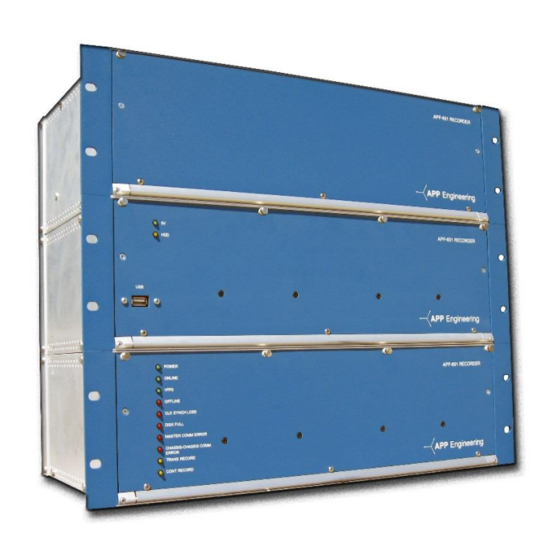
User Manuals: APP APP-601 Measuring Instruments
Manuals and User Guides for APP APP-601 Measuring Instruments. We have 1 APP APP-601 Measuring Instruments manual available for free PDF download: Operating Manual
APP APP-601 Operating Manual (146 pages)
Brand: APP
|
Category: Measuring Instruments
|
Size: 4 MB
Table of Contents
-
-
Event Inputs20
-
Power Supply20
-
Enclosures24
-
Environment24
-
Approvals24
-
-
4 Hardware
38-
-
Data Chassis47
-
Networking60
-
-
Introduction62
-
-
-
Introduction68
-
Printing72
-
-
-
Resetting FID103
-
Restart Recorder104
-
-
Saving RMS Data109
-
-
FTP a Fault File116
-
Show FTP Window116
-
-
-
Pmu126
-
-
-
Analog Tab129
-
Events Tab130
-
Triggers Tab130
-
Yscale Controls131
-
Meter Controls131
-
Run Controls131
-
Bottom Tray132
-
-
Advanced Menu134
-
-
Time Quality140
-
Advertisement
